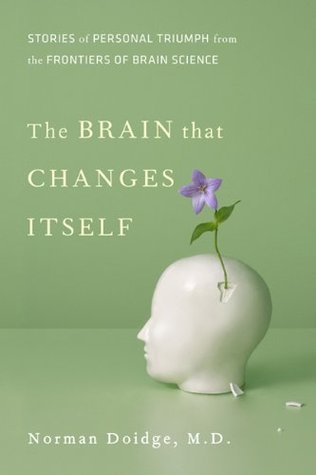Rupert Owen reviewed The Brain that changes itself by Norman Doidge
A book that changes how we think about the brain ...
3 stars
I found The Brain that Changes itself to be a decent entry level reference to brain plasticity. Norman writes with clarity and accessibility on a topic that could have been crowded with complicated medical jargon, on the flip side, I found his narrative to be sometimes dangerously close to hyperbolic, but I think it is important to read between the lines of pragmatic research and selling the reader the idea through case studies. Why I say this, is because he doesn't question the findings of others but runs with it wholeheartedly. This might be what he refers to as "perfectibility", and something he unconsciously is doing himself.
He does write briefly about the contrary nature of neurological plasticity (the plastic paradox), and revisits that notion in the last chapter. I wanted more from the other side of the argument and why the contradictions don't stand up, so I could balance …
I found The Brain that Changes itself to be a decent entry level reference to brain plasticity. Norman writes with clarity and accessibility on a topic that could have been crowded with complicated medical jargon, on the flip side, I found his narrative to be sometimes dangerously close to hyperbolic, but I think it is important to read between the lines of pragmatic research and selling the reader the idea through case studies. Why I say this, is because he doesn't question the findings of others but runs with it wholeheartedly. This might be what he refers to as "perfectibility", and something he unconsciously is doing himself.
He does write briefly about the contrary nature of neurological plasticity (the plastic paradox), and revisits that notion in the last chapter. I wanted more from the other side of the argument and why the contradictions don't stand up, so I could balance an objective view.
I found some of the descriptive asides of the neurological scientists to be a little sycophantic in the sense of an unnecessary embellishment on scientific prose. Norman's tone does change, however, when he touches on the science of his own background, psychology and psychiatry. I felt the chapter on "Acquiring Tastes and Loves" should have been omitted from this case study, as it could fill a book of its own, and I found some of Norman's lines of reasoning to be arguable.
There certainly is some fascinating stuff to be found in this book, and I found it gave me a better understanding to how a brain copes under the stress of injury or malformation. I would recommend it to anyone wanting an overview of neurological plasticity, and a little knowledge of its history, and where it is going. I commend Norman for penning the book, and I certainly found it interesting. On the whole it isn't a pseudo-scientific study, nor intended for self-help, but it is an eye opener, and the general principles are incredibly valuable for those of us challenged by brain injury.

